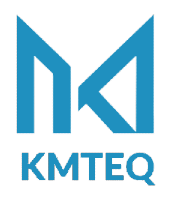Streamlining Finance Operations through Automated Audit Process Management Tool
Learn how KMTEQ’s automation experts assisted our Fortune 500 client in creating and deploying the automated “Audit Process Management” tool and achieved top client satisfaction.
Introduction
In the domain of financial operations, the utmost importance is placed on efficiency and precision. Our client, a top-tier leader in the financial sector, enlisted our team of specialists to assist in creating and deploying an automated “Audit Process Management” tool in their daily finance operations. This tool is specifically designed to enhance and simplify expense compliance audit procedures for Policy, Corporate Card, and Expense Compliance (PCEC) teams. The objective is to eliminate manual processes and offer a unified platform for auditors and managers to automate and reduce mundane tasks.
The Objective
This project’s central aim is the automation of manual processes carried out by current applications, bringing them together within a centralized platform. Our client specifically requires a suite of tools encompassing a landing page, role-specific dashboards, audit metrics, search capabilities, calendar integration, notification sections, audit list pages, and an admin section. These tools are designed to cater to the unique needs of auditors and managers, providing a unified interface with role-specific features and functionalities. In essence, the objective is to streamline operations and enhance efficiency by consolidating diverse functionalities into a cohesive system that ensures a seamless experience for auditors to enter data and managers to approve them.

Challenges and Pain Points
Library Management
Updating and consuming common libraries across multiple processes posed a significant challenge. Ensuring seamless integration and consistency required careful planning and execution.
One Build One Deployment Model
Implementing a Proof of Concept (POC) for a ‘One Build One Deployment’ model using the NX DEV Approach of MonoRepo presented technical hurdles and required meticulous configuration.
Quality Check of Audits
Conducting Quality Checks (QC) for a multitude of processes, involving re-auditing and linking to the original audit, presented a complex challenge in maintaining audit integrity and accuracy.
Overcoming Challenges
Library Integration
Our team addressed library management challenges by implementing a robust version control mechanism. This ensured that common libraries were updated systematically, and processes consumed the latest functionalities seamlessly.
MonoRepo Implementation
Overcoming challenges in the ‘One Build One Deployment’ model was achieved by our team through a well-executed Proof of Concept (POC). Our team leveraged the NX DEV approach to streamline build and deployment processes which enhanced development efficiency.
Quality Check Automation
To address QC challenges, our team implemented an automated QC process thereby reducing manual effort. Our team made solution in a such a way that senior managers could perform re-auditing efficiently, linking back to the original audit with improved accuracy.

Integration
Our team used Azure tools, including Azure dashboard for task assignment and progress tracking. On top of that, we also integrated the Azure pipeline for seamless build and deployment. Lastly, we used Azure Version Control for code repository management, which played a crucial role in the project’s integration.
Reduction in manual audit effort
30%
Improvement in Overall Process Efficiency
15%
Increase in Audit Accuracy
20%
The Output
Our application has achieved stability with over 40 successfully released sub-modules, showcasing core features developed within the project scope. Our team not only implemented planned sub-modules but also incorporated enhancements, resulting in a significant 30% reduction in manual audit efforts, a 20% increase in audit accuracy, and a 15% improvement in overall process efficiency.
Currently stable, our ongoing efforts focus on generalizing the existing code base for common features, consolidating them into a single set. This strategic approach aims to enhance reusability, optimizing the application for upcoming processes and ensuring adaptability to evolving requirements.
Conclusion
Our client’s finance operations underwent a successful transformation and optimization through our automated Audit Process Management tool. Our team, by addressing challenges with innovative solutions, established a precedent for automated financial operations within the organization. The integration of Azure tools enabled our team to ensure scalability and sustainability, ensuring the tool’s continued success in the dynamic landscape of finance compliance.
